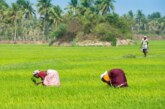By Dr Arvind Kumar
The Earth is frequently called as the water planet because 70 percent of its surface is covered by water. However, only 3 percent of that water is potable, and two-thirds of that fresh water is trapped within glaciers. Twenty percent of the world’s population does not have sustained access to safe drinking water and 40 percent do not ordinarily utilise appropriate sanitation facilities.
In that sense, everyone is equal. But, there is extreme inequality in the location of water, access to water and the quality and quantity of water that is available on a daily basis. There is also a burgeoning gap between the haves and have-nots in terms of water.
Water is also closely tied to food, energy and climate change. In that sense, water is a key component of national security. If the 20th century witnessed the rise and fall of nations over oil, the 21st century could be one in which the rise and fall of nations is determined by water.
Further global warming will lead to climate irregularities and unusual weather. In South and East Asia, those trends could lead to a faster melting of the Himalayan glaciers that now cover the Tibetan plateau.
Moreover, disputes over water are escalating among nations that lie along those rivers. One of the largest risks of climate change may be a possible conflict over the water from the melting of the Himalayan glaciers that feed the world’s two most populous nations, China and India, as well as Pakistan.



